Wall of fame: Serpentine Galleries and Maharam deliver works of art by the roll

London's Serpentine Galleries and American textile house, Maharam's collaboration: A collection of 13 patterned wallpapers by seven artists and architects. Frames, from left, Circa 1907 American Arts & Crafts painting frame, by Carrig-Rohane Boston Makers; 18th-century French Louis XVI frame; custom-made replica of a 1920s-30s American Modernist frame; 19th-century french shadowbox frame, all from Gill & Lagodich Gallery, New York Producer: Michael Reynolds
Putting a John Baldessari or a Rosemarie Trockel on your wall just got a whole lot easier, thanks to a collaboration between London's Serpentine Galleries and the American textile house, Maharam. The Serpentine's latest stab at making art accessible to all is an inspiring collection of wallpapers. Made up of 13 patterns, mainly produced specifically for the project, by seven artists and architects, the inaugural collection brings the long tradition of artists creating wallpapers bang up to date.
Under the fine curatorial eye of Julia Peyton-Jones and Hans Ulrich Obrist, co-directors of the Serpentine Galleries, the Maharam Serpentine Galleries wallpaper collection includes previously unseen work from artists such as John Baldessari, Marc Camille Chaimowicz, Rosemarie Trockel, Lawrence Weiner and Ai Weiwei, as well as architects Toyo Ito and SANAA, as featured in our June 2015 issue (W*195).
'Wallpaper is something many artists and architects have been interested in,' explains Obrist, who visited artists such as Beatriz González in Bogota and Etel Adnan in Beirut, during his early research of the idea.
'We found it interesting that this partnership with Maharam could be an exhibition of wallpapers that might be seen in houses all over the world and would actually lead to a dissemination.' 'It is possible for all of us to commission architects, designers and indeed artists, to do something specifically for us,' Peyton-Jones says. 'However, having wallpaper that you can buy by the roll, to cover a wall, a room, or a [whole] house or apartment, means that you can be your own curator in your own home.'
The collection's vibrant patterns range from the abstract to the photorealistic, and are all realised using the fine-art grade, digital printing techniques that Maharam has finessed since launching its Maharam Digital Projects arm in 2009. Each artist's design is printed with UV-resistant inks onto a latex- reinforced substrate. The end results possess all the durability of traditional wallpaper.
Apart from John Baldessari's four designs, which originally appeared in a 1998 exhibition in Zurich, each pattern is freshly minted. From Marc Camille Chaimowicz's illustrative 'Pavilion' design, which depicts the Serpentine building in its Kensington surroundings, to Ai Weiwei's self-referential 'Golden Age' and Rosemarie Trockel's restrained shapes, the works are not just familiar favourites on a roll.
'The patterns were created in dialogue with the artists, and on the basis of past work that had been underexposed,' comments Michael Maharam, the wallpaper company's CEO, who helped set the course of the Serpentine Galleries' venture. While the choice to include designs from SANAA and Toyo Ito might seem an unusual turn, the architects' involvement highlights the increasing cross-pollination between art, design and architecture, which the Serpentine Galleries has long pioneered.
Everyone involved in the collection was given creative carte blanche. Maharam provided only technical guidance to ensure a distinguishable pattern was created. Dung Ngo, the brand's editorial director, explains, 'Because artists' works are generally unique as a composition, they can struggle with the idea of a repeatable pattern. The best way [of working] has often been for us to create a repeat with the art they give us, so they can see what it looks like on a wall. Once they see it, it is much easier to make adjustments.'
Briefly showcased at a Libby Sellers - curated show at La Rinascente, during April's Salone del Mobile in Milan, the collection will debut officially at Frieze New York this month.'We see it as an evolving exhibition,' says Obrist, 'like the Serpentine Pavilions, which have been going for 15 years. We hope there will be 200 years of wallpaper.'
As featured in the June 2015 (W*195) issue of Wallpaper*
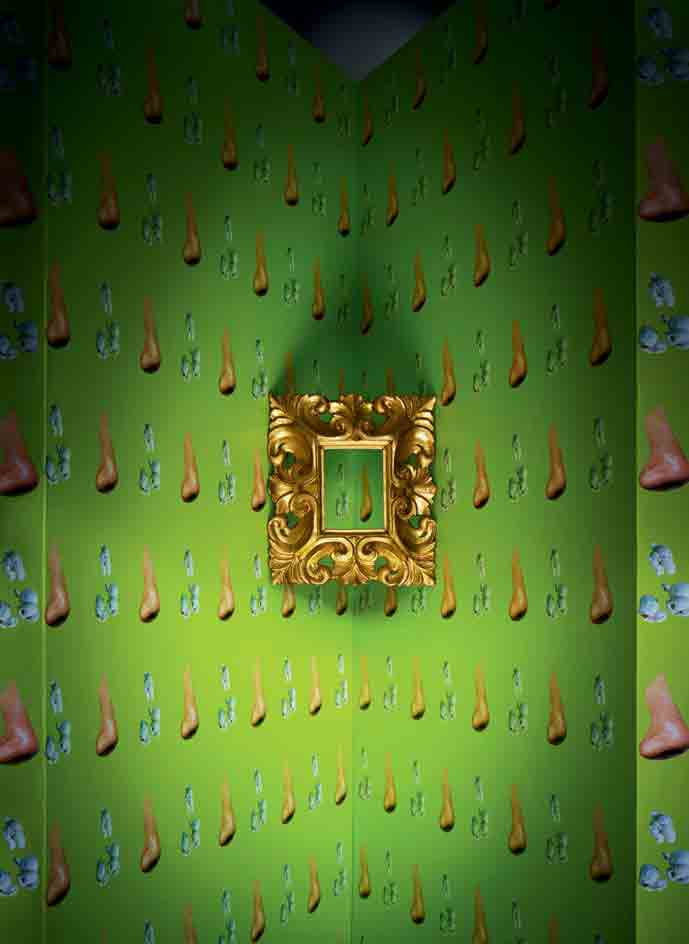
‘Nose/Popcorn – Yellow/Green’ wallpaper by John Baldessari with 17th-century Italian pierced lobate leaf and volute motif frame, from Gill & Lagodich Gallery. Producer: Michael Reynolds
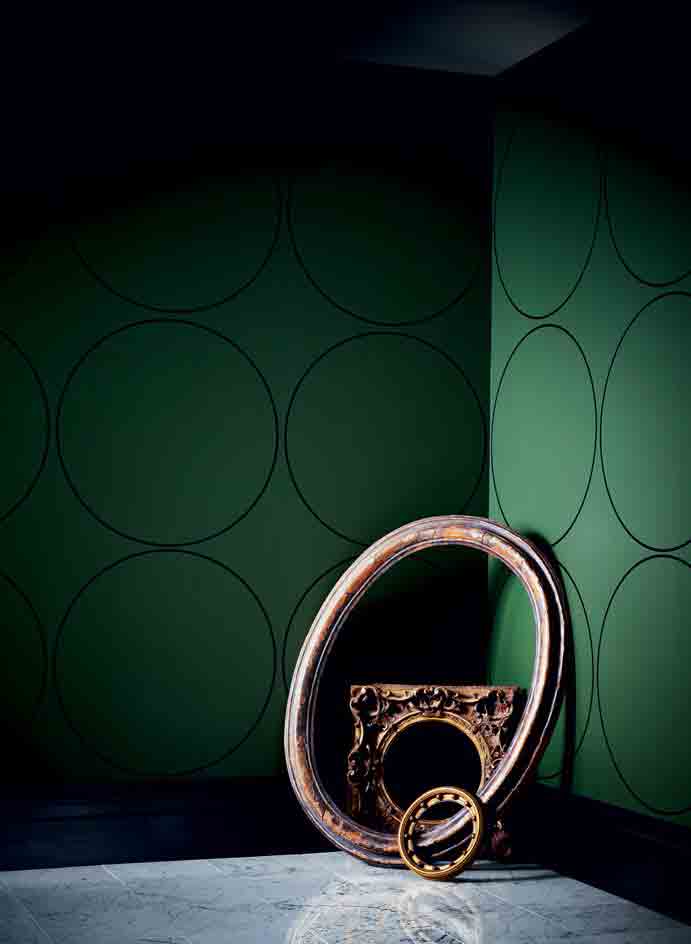
‘Circle Cutter’s Room’ wallpaper by Rosemarie Trockel with 18th-century Italian oval moulding frame; Circa 1740 French Louis XV frame with round opening; 19th-century American Scotia profile frame with applied balls, all from Gill & Lagodich Gallery. Producer: Michael Reynolds

'Ear/Pretzel - Pink' by John Baldessari. Inspired by a series of abstract prints which originally appeared in a 1998 exhibition in Zurich. The set of prints matches shapes of unrelated subjects together to create a repetitive pattern.
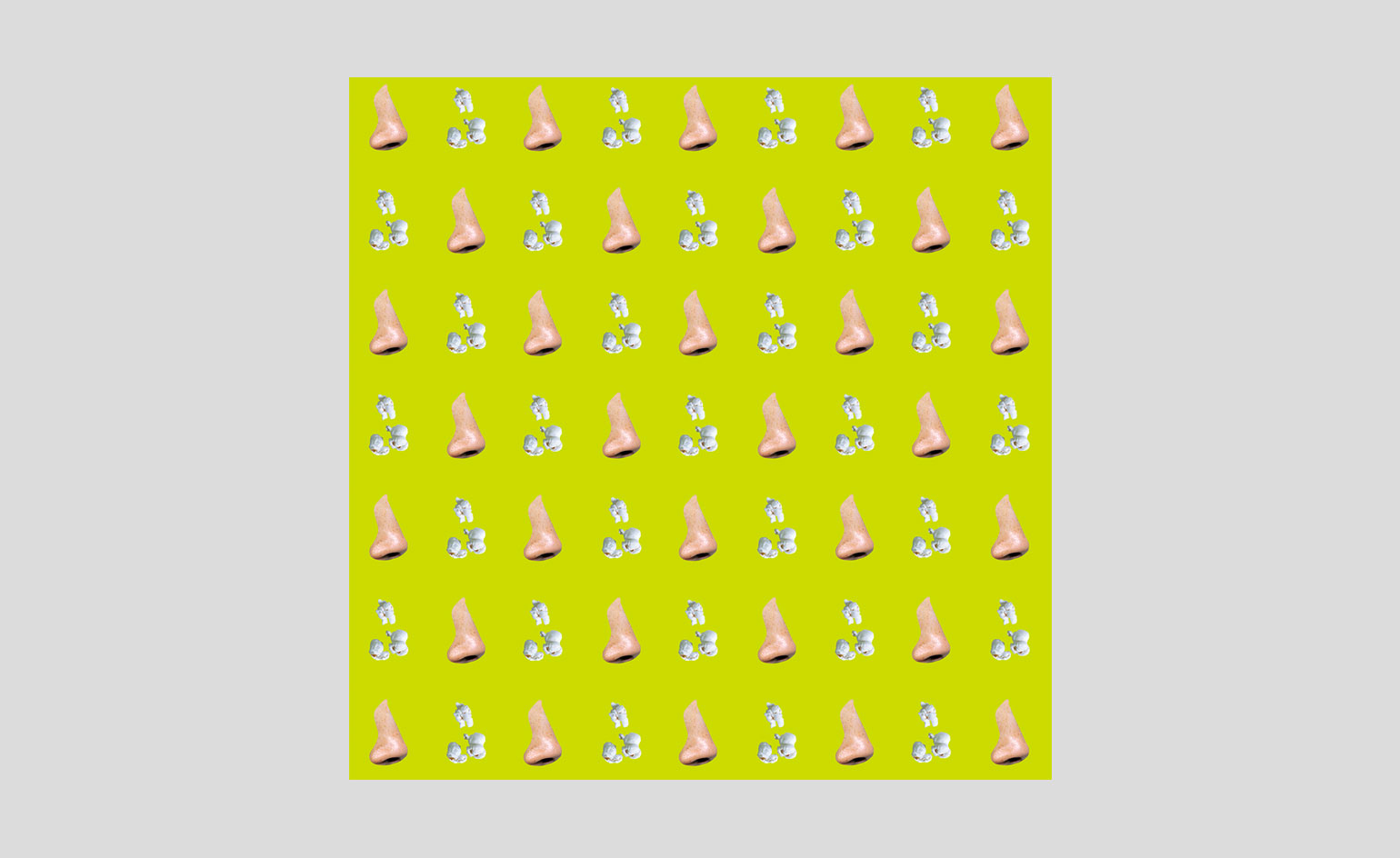
'Nose/Popcorn - Yellow/Green' by John Baldessari. The American-born artist uses vibrant colours, adding to the playful quirkiness of his designs.
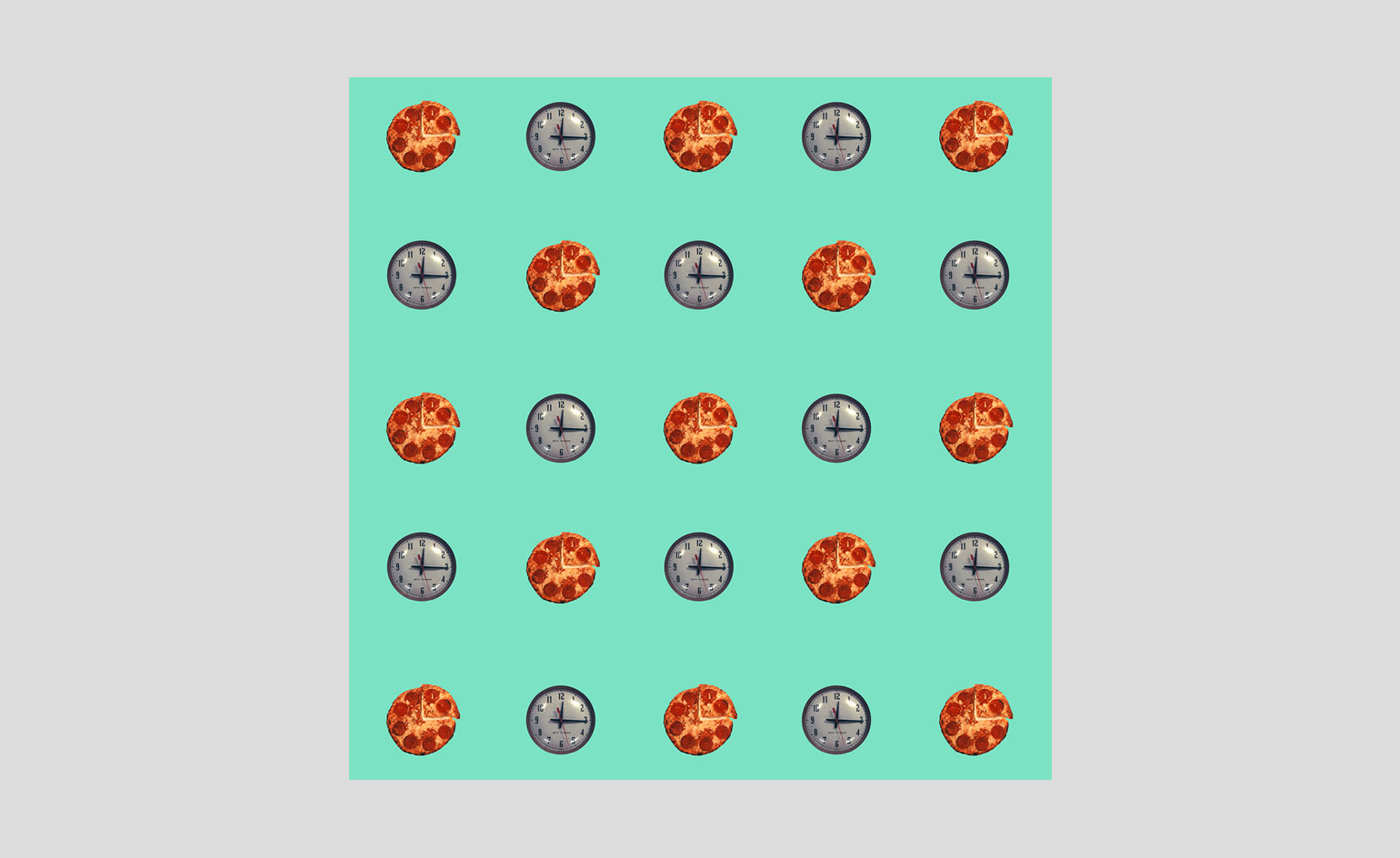
'Clock/Pizza - Turquoise' by John Baldessari.

'Potato/Lightbulb - Blue' by John Baldessari.

'Finger' by Ai Weiwei. The Chinese artist's pattern shows twisted interlocking images of his own arm with the contentious gesture hidden in the spiral entanglement.

'Golden Age' by Ai Weiwei. A political statement, Weiwei keeps in with the theme of entanglement using surveillance cameras and handcuffs to allude to the government.

'Ume' by Toyo Ito. The architect was inspired by a web of branches from a Japanese plum tree.
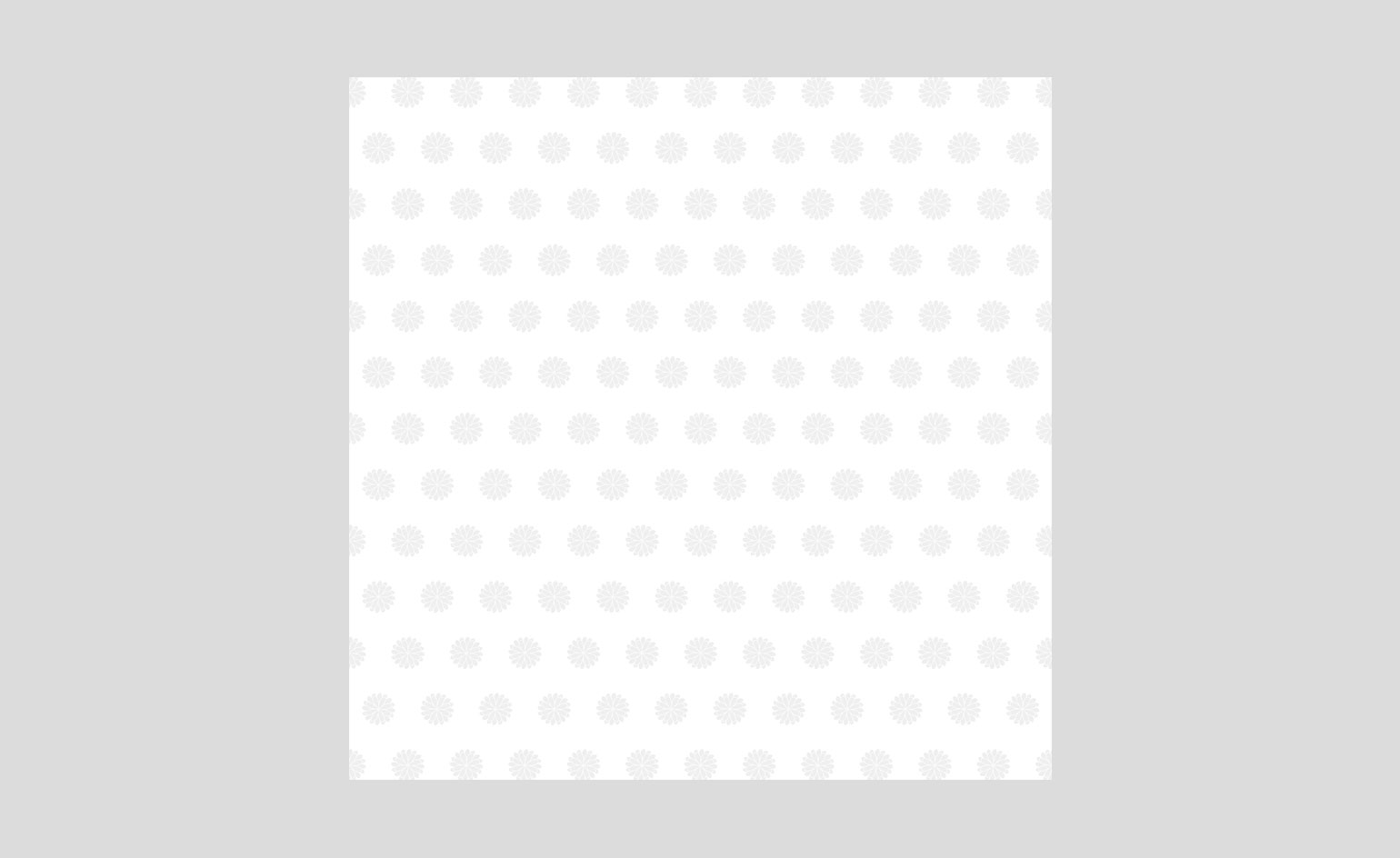
'Stamp Flowers' by SANAA. The delicate nature of SANAA's second pattern is reminiscent of their simplistic architectural style.
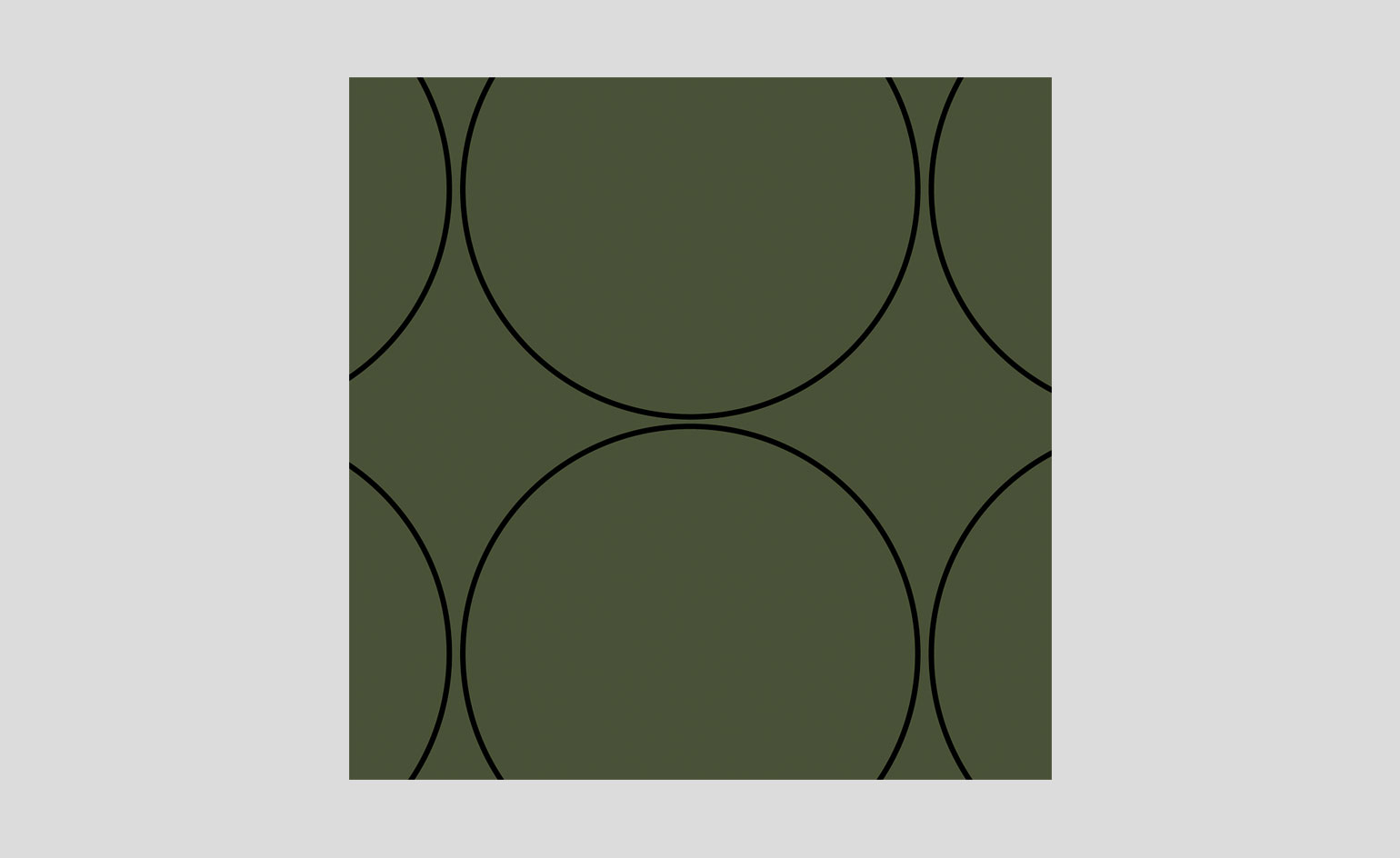
'Circle Cutter's Room' by Rosemarie Trockel. The contemporary artist uses geometric prints to communicate graphic qualities of symmetry and size.
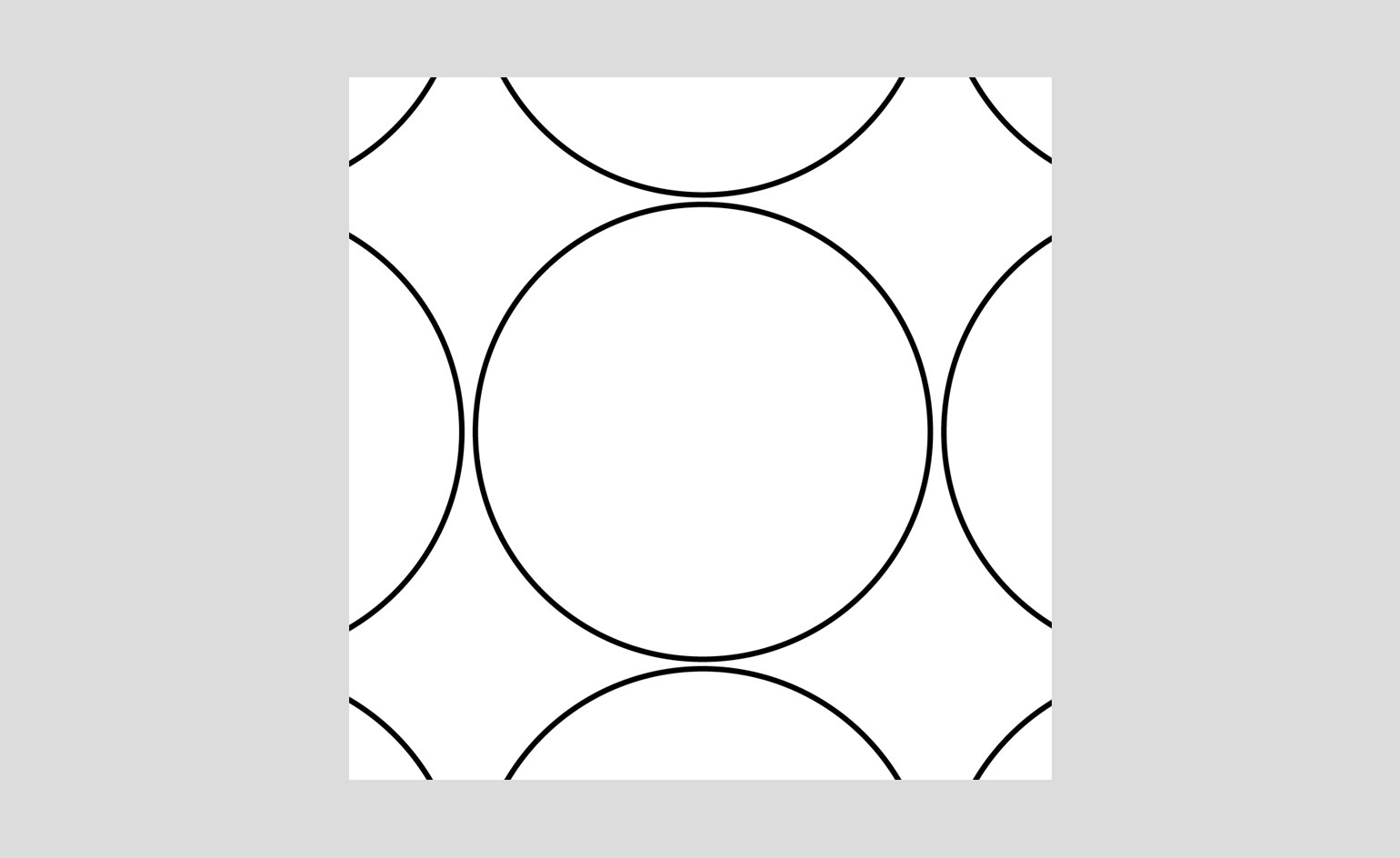
Black and white version of 'Circle Cutter's Room' by Rosemarie Trockel.

'Square Cutter's Room' by Rosemarie Trockel. The simple grid pattern has bigger impact when enlarged to wallpaper.
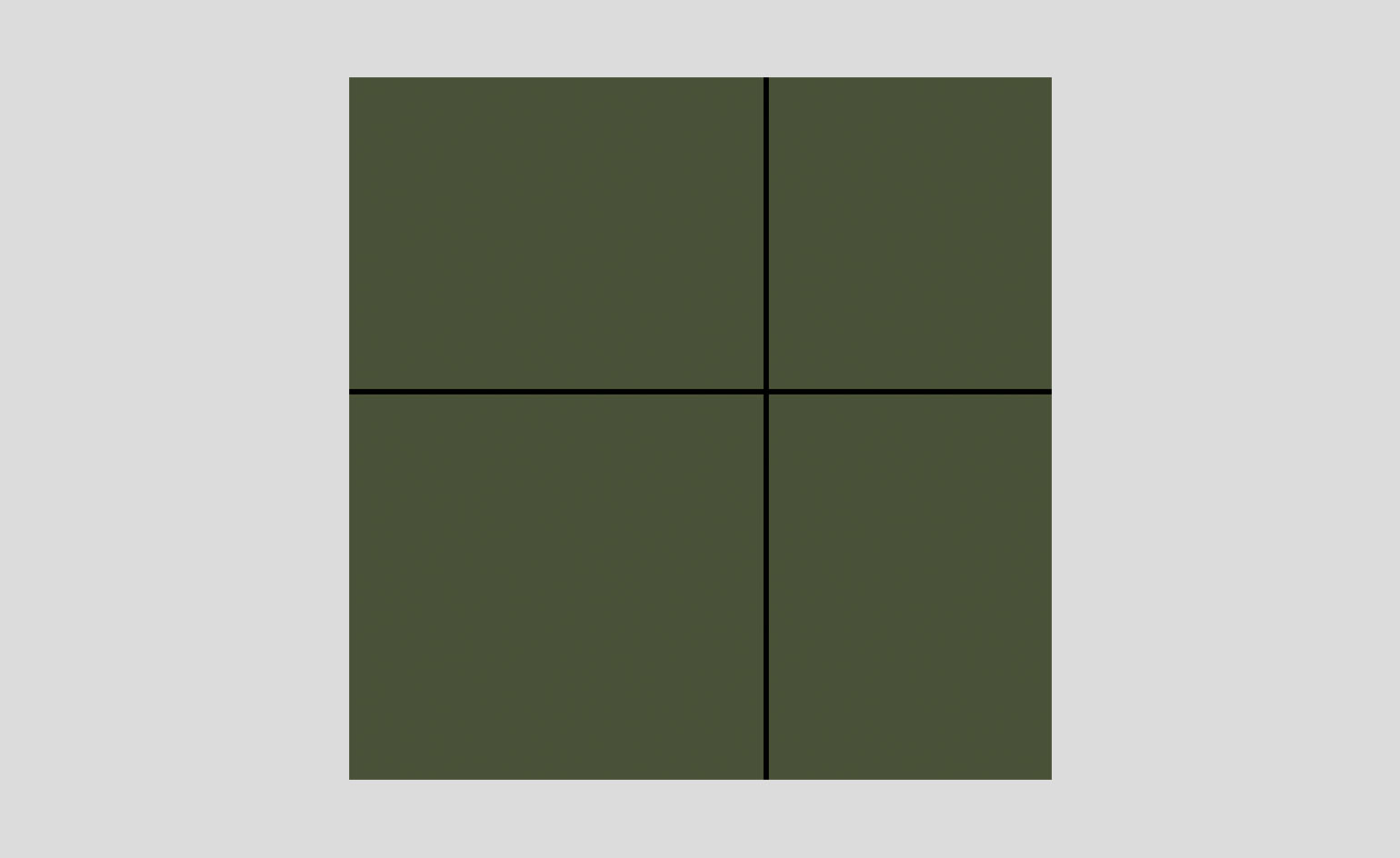
'Square Cutter's Room' by Rosemarie Trockel in olive and black.
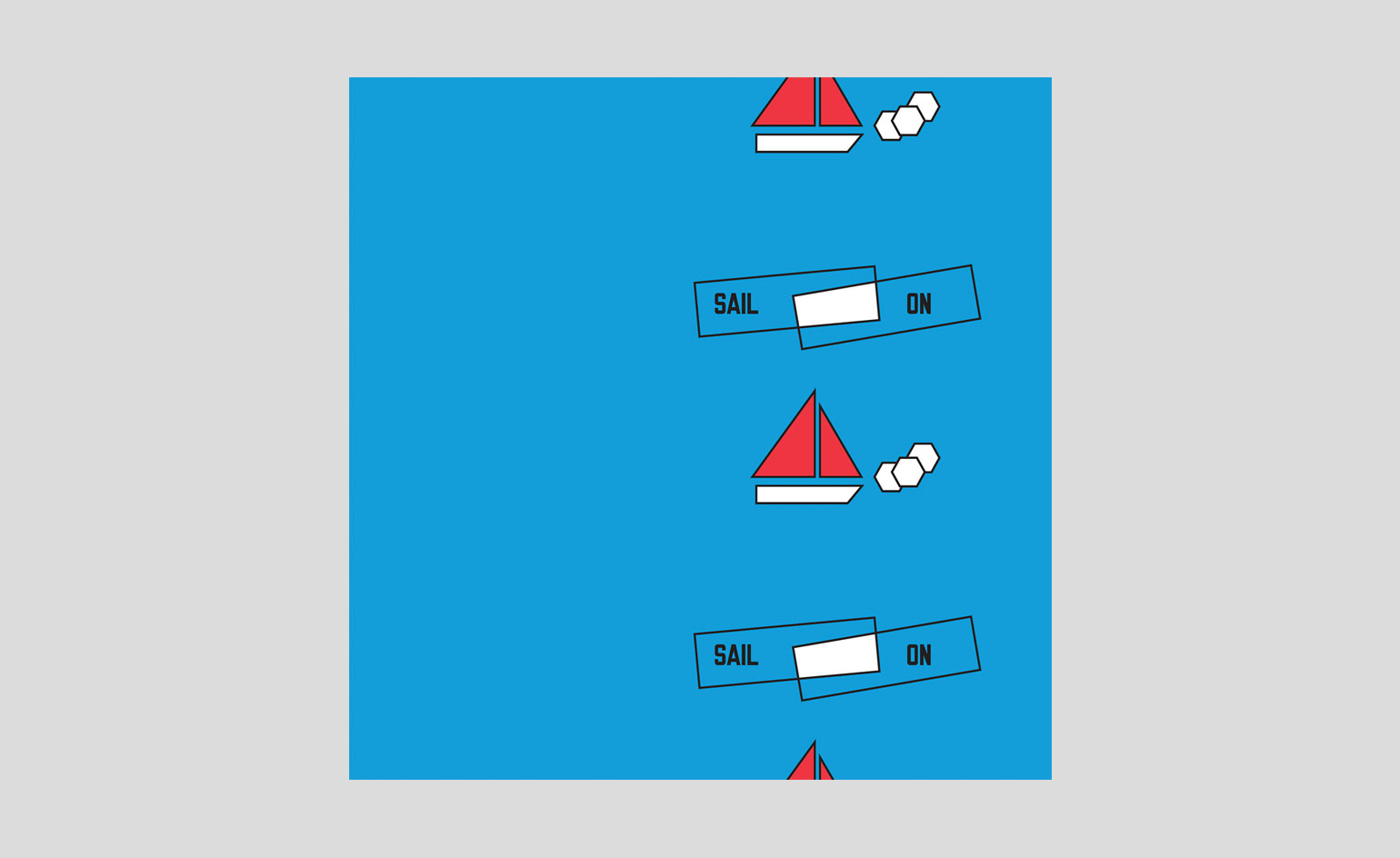
'Sail On' by Lawrence Weiner. Created with children in mind, the American artist employs bold primary colours to clever effect. Influenced by his typographical background, he uses the hexagons after the ship as ellipses for continuation.

'Pavilion' by Marc Camille Chaimowicz. The illustrative designs from the Parisian artist displaying the Serpentine building in its Kensington surroundings are available in different pastel hues.
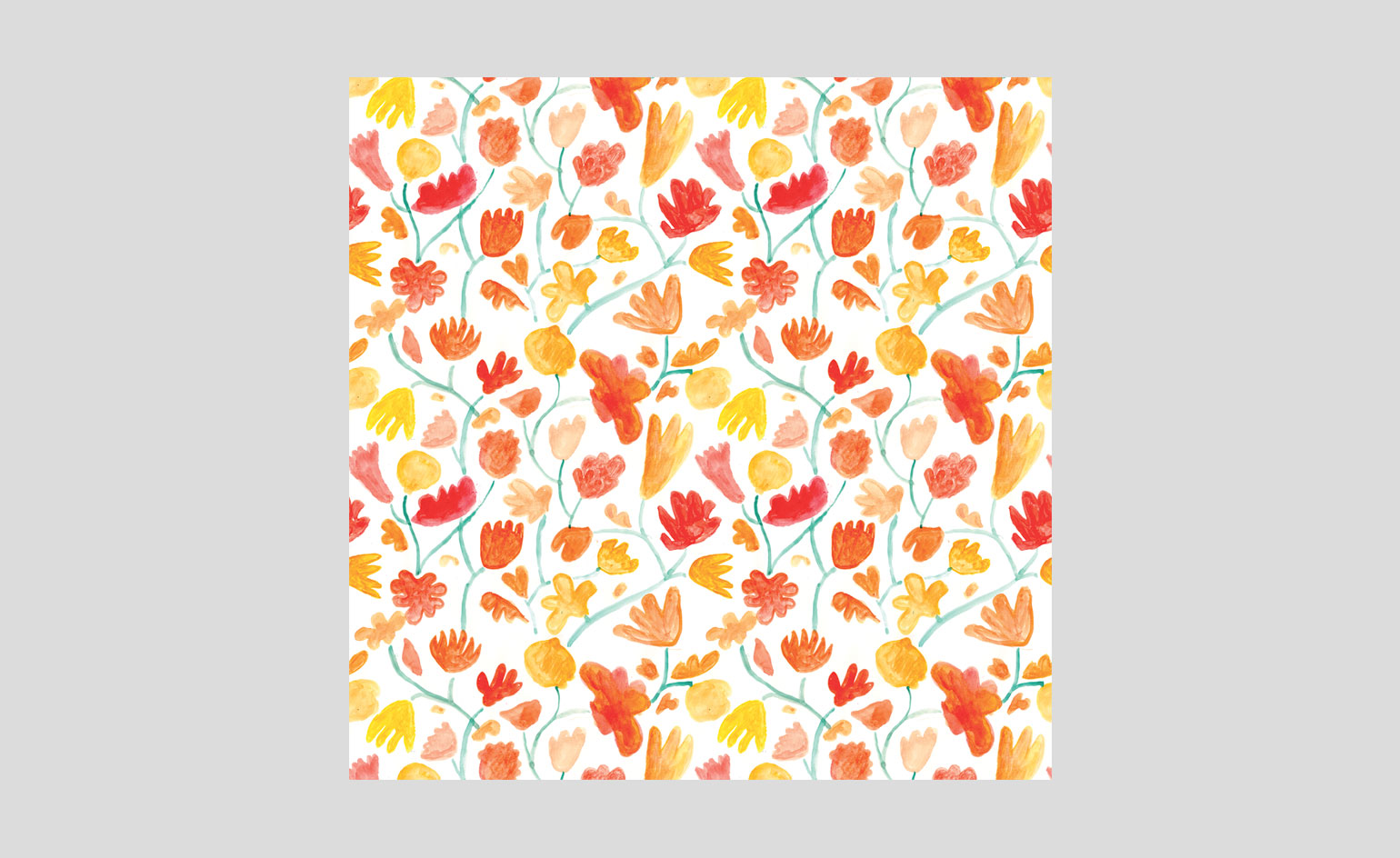
'Watercolor Flowers' by SANAA. Japanese florals create the architecture duo's hand-painted pattern.
Receive our daily digest of inspiration, escapism and design stories from around the world direct to your inbox.
Pei-Ru Keh is a former US Editor at Wallpaper*. Born and raised in Singapore, she has been a New Yorker since 2013. Pei-Ru held various titles at Wallpaper* between 2007 and 2023. She reports on design, tech, art, architecture, fashion, beauty and lifestyle happenings in the United States, both in print and digitally. Pei-Ru took a key role in championing diversity and representation within Wallpaper's content pillars, actively seeking out stories that reflect a wide range of perspectives. She lives in Brooklyn with her husband and two children, and is currently learning how to drive.
-
 Top 25 houses of 2025, picked by architecture director Ellie Stathaki
Top 25 houses of 2025, picked by architecture director Ellie StathakiThis was a great year in residential design; Wallpaper's resident architecture expert Ellie Stathaki brings together the homes that got us talking
-
 Year in review: the shape of mobility to come in our list of the top 10 concept cars of 2025
Year in review: the shape of mobility to come in our list of the top 10 concept cars of 2025Concept cars remain hugely popular ways to stoke interest in innovation and future forms. Here are our ten best conceptual visions from 2025
-
 These Guadalajara architects mix modernism with traditional local materials and craft
These Guadalajara architects mix modernism with traditional local materials and craftGuadalajara architects Laura Barba and Luis Aurelio of Barbapiña Arquitectos design drawing on the past to imagine the future
-
 Out of office: The Wallpaper* editors’ picks of the week
Out of office: The Wallpaper* editors’ picks of the weekFrom sumo wrestling to Singaporean fare, medieval manuscripts to magnetic exhibitions, the Wallpaper* team have traversed the length and breadth of culture in the capital this week
-
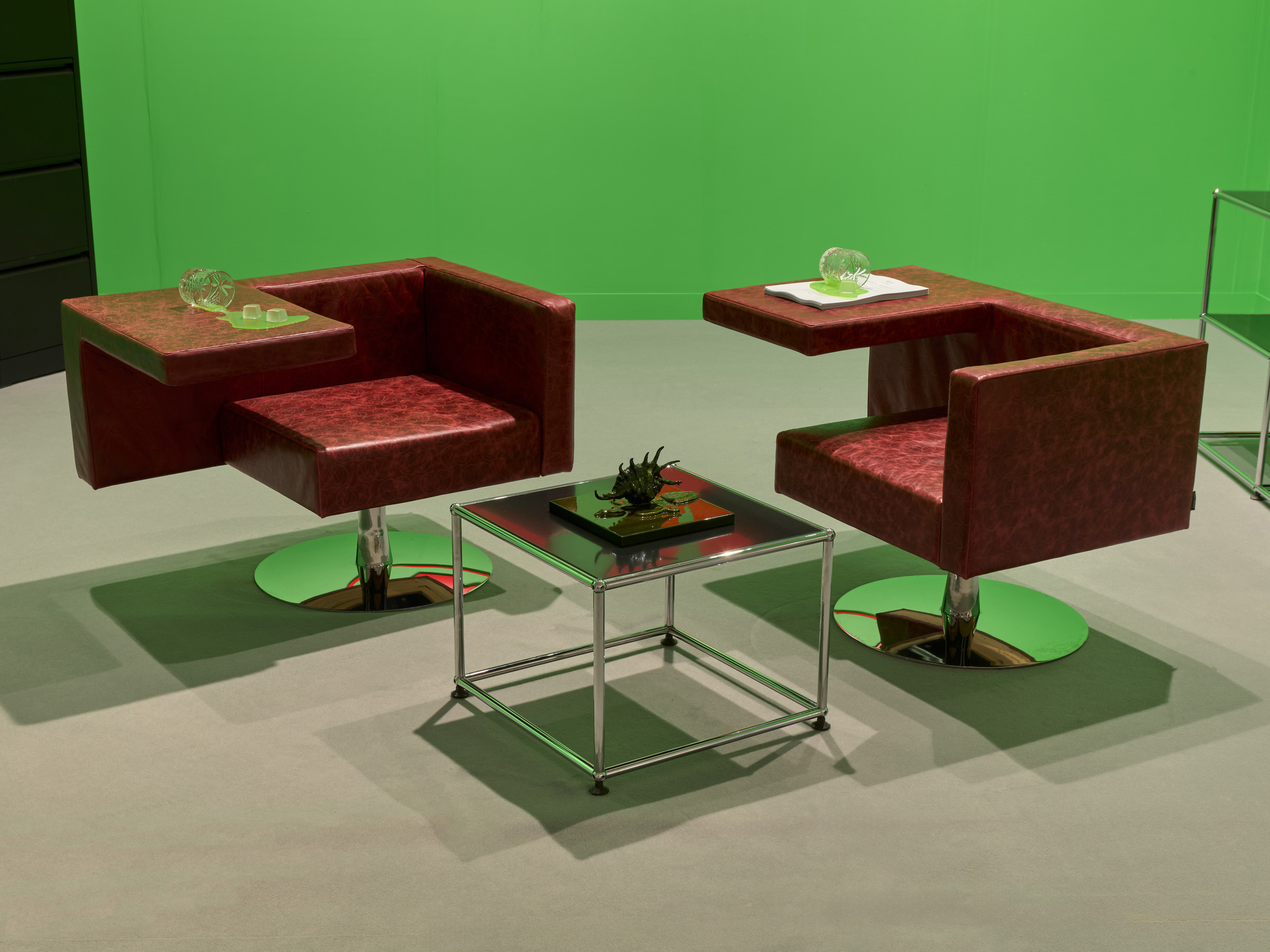 Who are the nine standout artists that shaped Frieze London 2025?
Who are the nine standout artists that shaped Frieze London 2025?Amid the hectic Frieze London schedule, many artists were showcasing extraordinary work this year. Here are our favourites
-
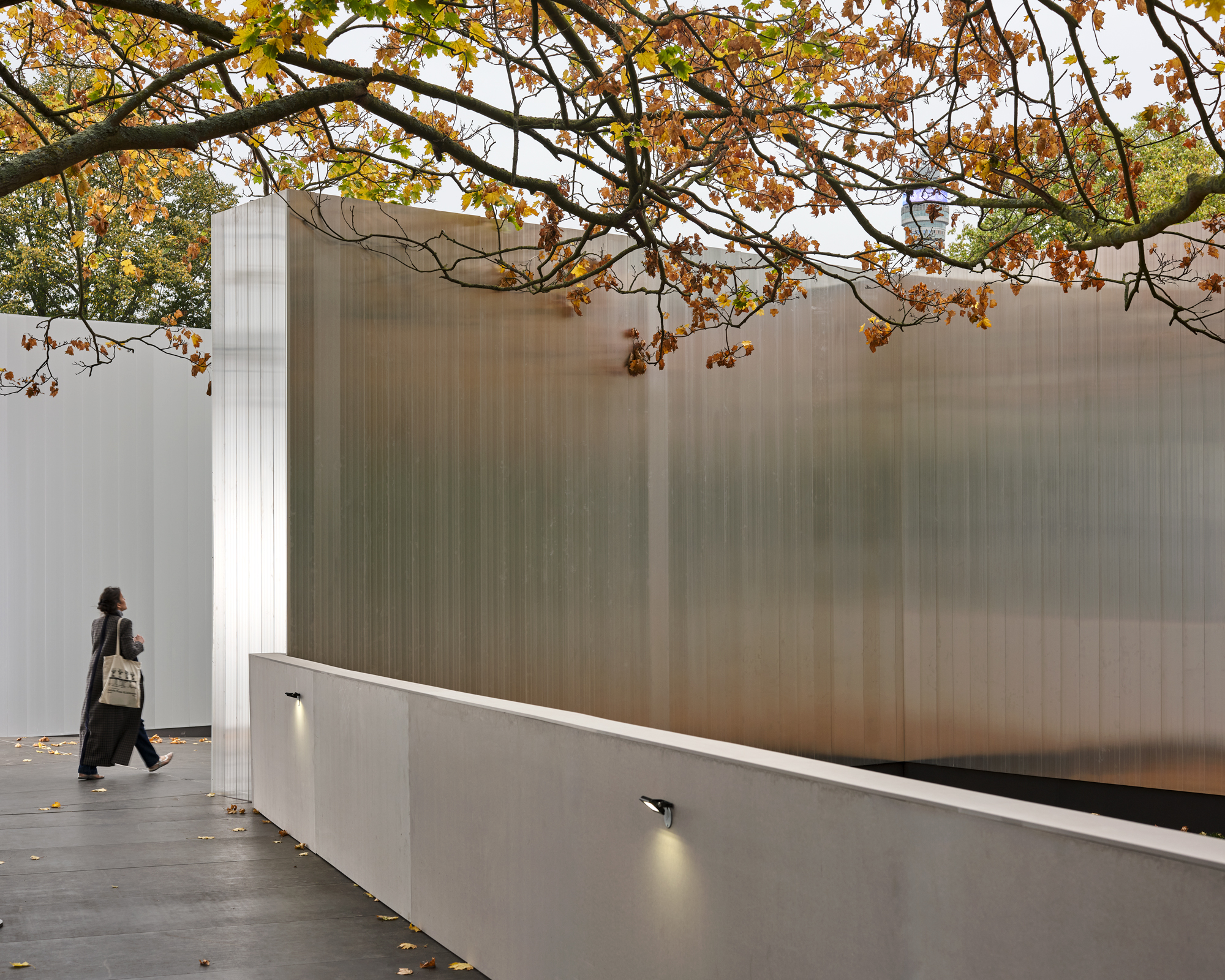 Out of office: The Wallpaper* editors' picks of the week
Out of office: The Wallpaper* editors' picks of the weekThe London office of Wallpaper* had a very important visitor this week. Elsewhere, the team traverse a week at Frieze
-
 Leo Costelloe turns the kitchen into a site of fantasy and unease
Leo Costelloe turns the kitchen into a site of fantasy and uneaseFor Frieze week, Costelloe transforms everyday domesticity into something intimate, surreal and faintly haunted at The Shop at Sadie Coles
-
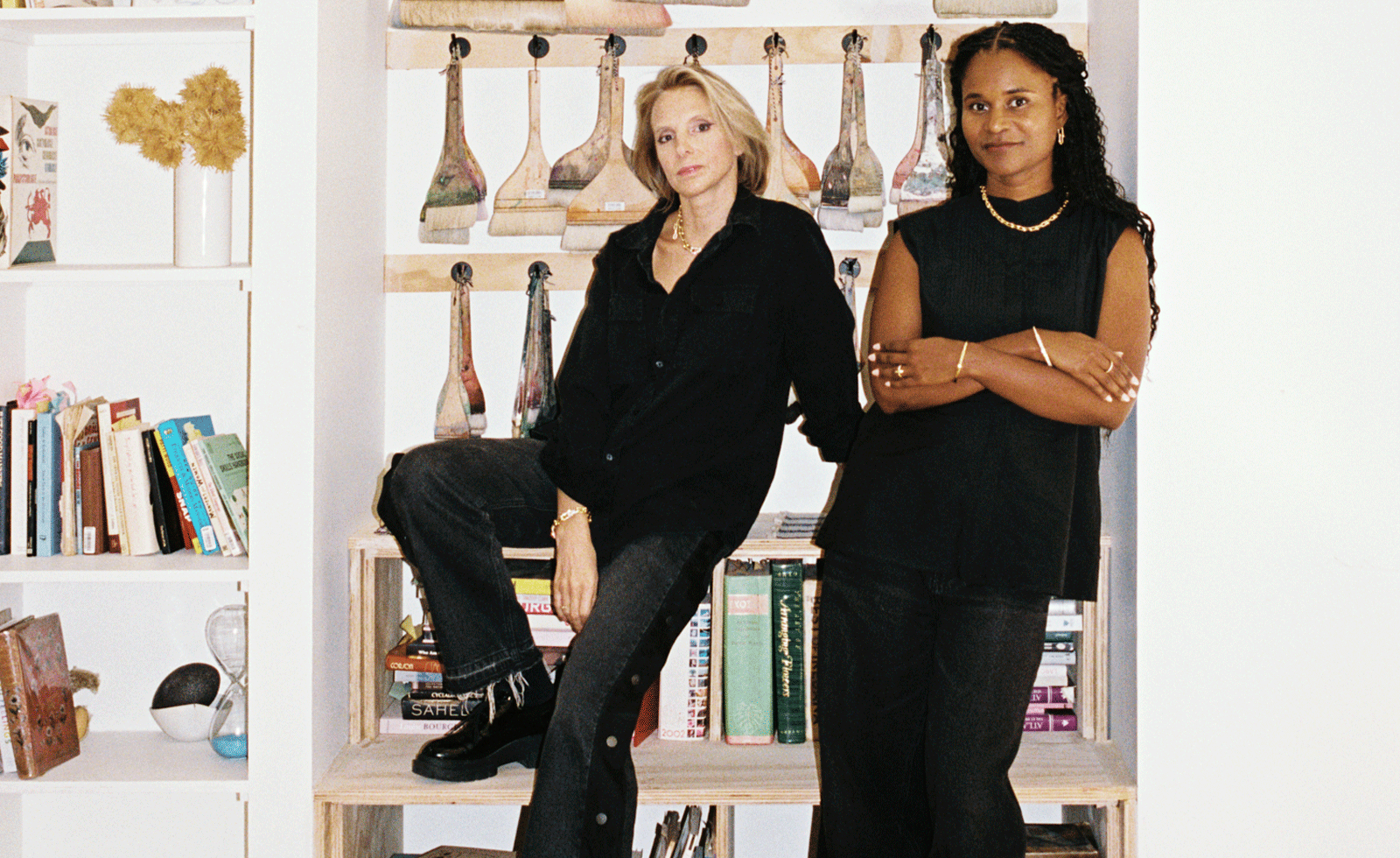 Tiffany & Co’s artist mentorship at Frieze London puts creative exchange centre stage
Tiffany & Co’s artist mentorship at Frieze London puts creative exchange centre stageAt Frieze London 2025, Tiffany & Co partners with the fair’s Artist-to-Artist initiative, expanding its reach and reaffirming the value of mentorship within the global art community
-
 Out of office: the Wallpaper* editors’ picks of the week
Out of office: the Wallpaper* editors’ picks of the weekAs we approach Frieze, our editors have been trawling the capital's galleries. Elsewhere: a 'Wineglass' marathon, a must-see film, and a visit to a science museum
-
 Frieze Sculpture is back – here's what to see in Regent's Park
Frieze Sculpture is back – here's what to see in Regent's ParkFrieze Sculpture has returned to Regent's Park. As London gears up for Art Week, here's what to see on the fringes
-
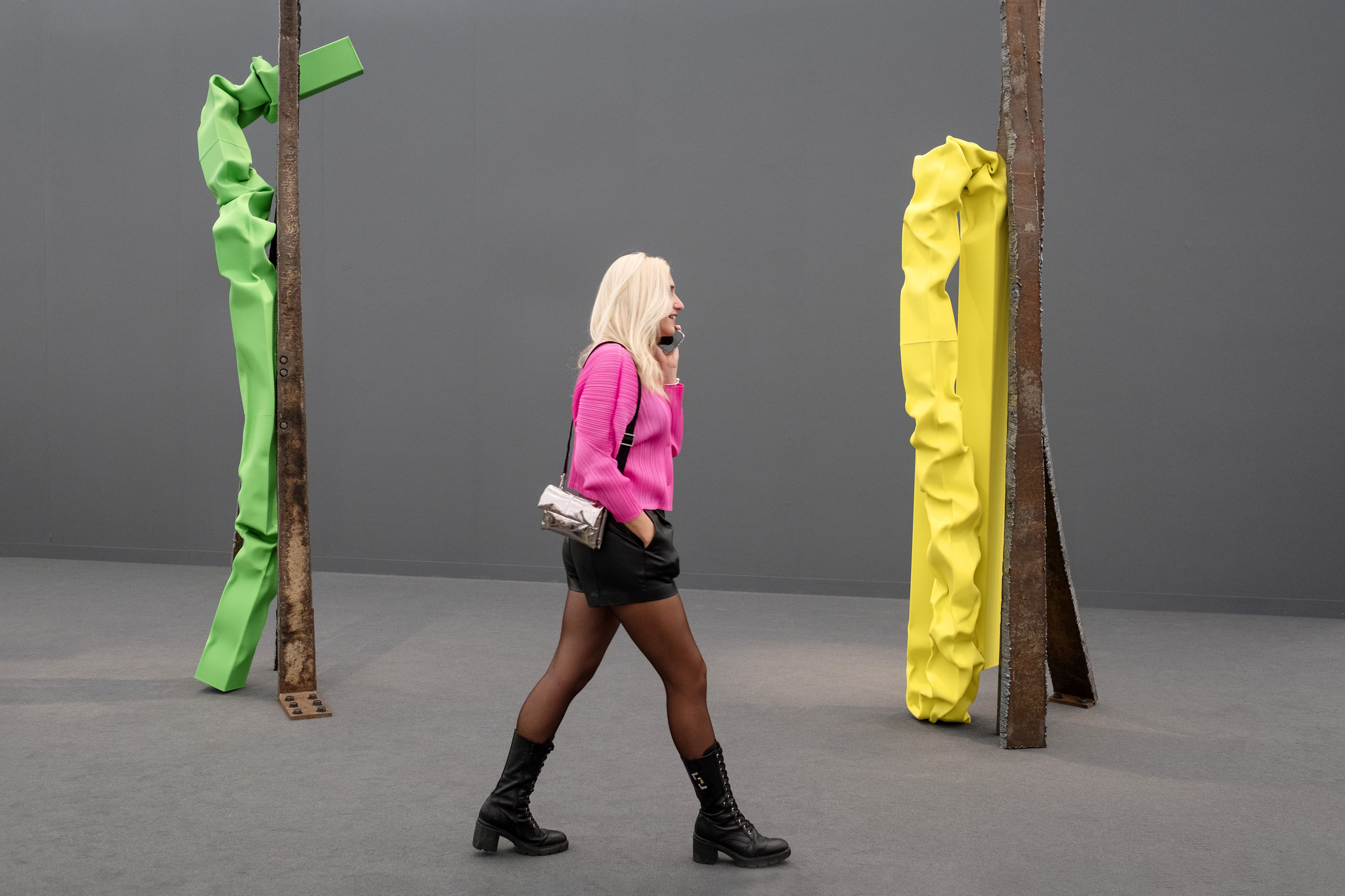 Frieze London is back! Here’s what to see
Frieze London is back! Here’s what to seeAs London gears up for Frieze 2025 (15-19 October), plan your visit early